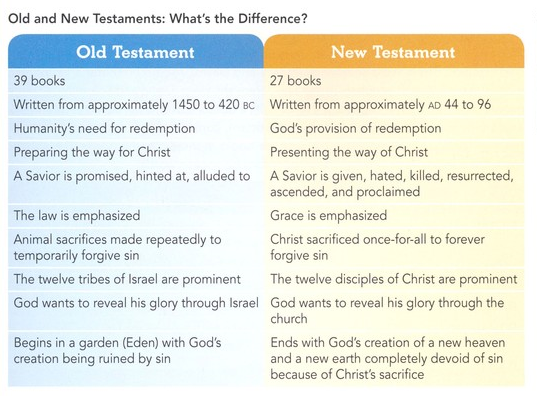 What if you could approach the Bible at your own pace, starting and stopping as you would in a world-class museum: reading individual exhibits, observing colorful displays, and gaining an overall understanding as you proceed?
What if you could approach the Bible at your own pace, starting and stopping as you would in a world-class museum: reading individual exhibits, observing colorful displays, and gaining an overall understanding as you proceed?
Bible Gateway interviewed Christopher Hudson (@ReadEngageApply) about his book, Self-Guided Tour of the Bible: Maps, Charts, Timelines, Simple Overviews (Rose Publishing, 2016).
[Read the Bible Gateway Blog post, How We Got the Bible: An Interview with Timothy Paul Jones]
How is your book different from other books that explain the Bible?
Christopher Hudson: We set this book up to be like a self-guided tour of a museum. What I love about a self-paced tour is that it lets you learn at your own pace and arrange the subjects in a way that’s interesting to you. We tried to take that same approach with this book.
This book has many different access points. You could certainly begin on page 1, but you might prefer to start with chapters 4 or 5 instead. The question for each reader is: What would help you understand your current Bible questions? Would starting with the timelines be best for you? Or the big picture themes? Character biographies? You can start wherever you like.
For whom is your book written and why did you target them?
Christopher Hudson: My personal mission is to help people read, engage, and apply the Bible. This book exists to help people do just that. If the Bible is God’s Word, then its message has utmost urgency. This book is written so that anyone can gain a better understanding of the Bible.
What role did God have in the writing of the Bible?
Christopher Hudson: When we see God work today, it’s often in behind-the-scenes ways. Many of us can look back at events and conversations in our lives and say, “Wow, I didn’t realize it at the time, but God was sure in the middle of that.” It’s during those moments we realize that God was guiding or teaching us.
God “wrote” the Bible in a similar way. I’m not sure many of the Bible’s writers sat down and said, “Today I’m going to write down the Bible.” Sure, I think there were times when Moses or one of the other prophets wrote down what God seemed to dictate to them. But in most cases, the authors of the Bible simply wrote down what they knew to be an important and authoritative message.
I think 2 Peter 1:20-21 sums up the experience well: “You must realize that no prophecy in Scripture ever came from the prophet’s own understanding or from human initiative. No, those prophets were moved by the Holy Spirit, and they spoke from God” (NLT). Just as a sailboat is moved by the wind, the Bible’s writers were moved by the Holy Spirit to carry along the message and meaning that was divinely inspired.
How did the Bible get to us?
Christopher Hudson: That’s a profound question. The Bible is more than the big, black book on our desk or nightstand. How the Bible got to us was actually quite amazing:
- Revelation & Inspiration. The Bible had 30-40 different writers over the course of nearly 2000 years. Individual books were written on scrolls or parchments.
- Duplication. People who lived in ancient times recognized that these writings were special and authoritative, and they faithfully copied them by hand for centuries.
- Canonization. After watching the impact and importance of these books over centuries, Jewish and Christian leaders recognized these books contained the very message of God. They collected them into what has become our Bible.
- Publication. Before the printing press, the Bible was copied by hand over and over again. After Gutenberg, copies were printed and more widely distributed.
- Translation. Don’t forget, the Bible was not written in English. While classic manuscripts were preserved in Hebrew, Greek, Aramaic, and Latin, brave people risked their lives to translate the Bible into languages that people could understand so that the Bible could be read by anyone.
- Transformation. Answering “how did the Bible get to us” is not complete unless we also include the impact it has on us as we read it. The Bible’s message is not complete if it just sits on our shelves without being read and heard.
Why should the Bible be viewed as trustworthy?
Christopher Hudson: This is a fundamental question and one I’ve labored over in my life. If the Bible is trustworthy, then it faithfully delivers God’s message and I have no choice but to read, engage, and apply it.
Often the question arises when people remember that the Bible was copied by hands for thousands of years. Can their work be trusted? I’ve studied this at length and have come to the strong conclusion that those who copied the ancient Scriptures in the days before Xerox® were careful!
How careful? Princeton’s Bruce Metzger, one of the preeminent New Testament scholars of the 20th century, concluded that after 2,000 years of being copied exclusively by hand, only 40 of the 20,000 lines of the New Testament are in dispute. More importantly, none of these variances undermine the basic teachings of the Christian faith. In other words, our modern-day Bibles are very credible—far more so than any other ancient historical document.
You write, “The essential story of the Bible is found in just 22 of the 66 Bible books.” Please explain.
Christopher Hudson: Most people get confused when they try to read straight through the Bible. That’s because nobody ever told them one very important fact. Here it is: The story of the Bible doesn’t begin in Genesis and then continue chronologically and sequentially through each of the 66 books.
Actually, the essential storyline of the Bible is found in the 22 history books found in the Bible. It makes sense that the story would be found in the history books, right?
I’m not saying that those 22 books are more important or more inspired. All of the Bible’s books are inspired and useful for revealing God and his message. I’m simply saying that the storyline tends to happen in the 22 books that were written to tell the story. That said, you can’t fully understand the history without reading the other books as well.
How does “everything in the Bible point to Jesus”?
Christopher Hudson: The Bible is a story about redemption. It’s such a strong theme that we can read it in nearly every section of the Bible. In the opening pages of Genesis, we discover a perfect world. We see human beings enjoying a perfect relationship with God, each other, and their universe. In Genesis 3, all that changes. Our relationships are broken with
- God (as seen in the pains of sin),
- each other (as seen in conflict, jealousy, fighting),
- and our physical world (as seen in every sickness & death)
The rest of the Bible shows us how severe those breaks are and that God has a plan to restore the world. The Hebrew Scriptures point to a time when a Messiah will come and lead the restoration (Jesus Christ).
The New Testament ends with the hope that one day we’ll enjoy a world described this way: “God’s dwelling place is now among the people, and he will dwell with them. They will be his people, and God himself will be with them and be their God. ‘He will wipe every tear from their eyes. There will be no more death’ or mourning or crying or pain, for the old order of things has passed away.” (Rev. 21:3-4, NIV)
The Bible is a story of a perfect world destroyed and then God’s ultimate restoration of that world through the life, death, and resurrection of Jesus Christ.
Briefly address one of the 8 major themes in the Bible that you summarize in Self-Guided Tour of the Bible.
Christopher Hudson: While the Bible has one great theme (redemption), we see a number of other minor themes that help us understand the Bible. Every passage we read is generally reinforcing one of these themes in the Bible. Remembering those themes can help us better understand even the more confusing parts of the Bible:
- God is. (The reality of God)
- God is awesome! (The glory of God)
- People are broken. (The sinfulness of humanity)
- God rescues us in Christ. (The wonder of salvation)
- We live by faith. (The call to believe)
- This world is not all there is. (The reality of the kingdom of heaven)
- Life is a team sport. (The necessity of community)
- All will be well. (The promise of restoration)
How should your book best be read?
Christopher Hudson: As you page through Self-Guided Tour of the Bible, you’ll see there are a number of lists, charts, and bullets that can be accessed as you read the Bible. When you read about King David, for example, you can flip open to the timeline and see what else was happening in the world at the time he lived. You can use the lists to put the kings and prophets in the proper order.
When you read about Egypt, you can give yourself greater context by quickly scanning a list of all the Bible stories that take place in Egypt.
At the same time, you can read the book straight through. I think our writing and editorial team did a great job in making sure there is depth on every page for readers of all Bible backgrounds.
What are your thoughts about Bible Gateway and the Bible Gateway App?
Christopher Hudson: I really appreciate the ministry of Bible Gateway. It’s easily one of the top 4-5 sites that I use every day for Bible reading and quick cross referencing.
Bio: Christopher D. Hudson’s mission is to help people read, understand, and apply the Bible. He’s authored or contributed to more than 50 Bible projects, 66 Bible study guides, and more than 100 books, including The Most Significant People, Places, and Events in the Bible: A Quickview Guide, Heaven and Hell: Are They Real?, and 100 Ways the Bible Can Change Your Life: Finding the Bible’s Solutions to Life’s Biggest Problems. He’s a graduate of Wheaton College in Illinois, and has been an active teacher in his church for more than 20 years. He lives outside of Chicago with his wife and three children.






